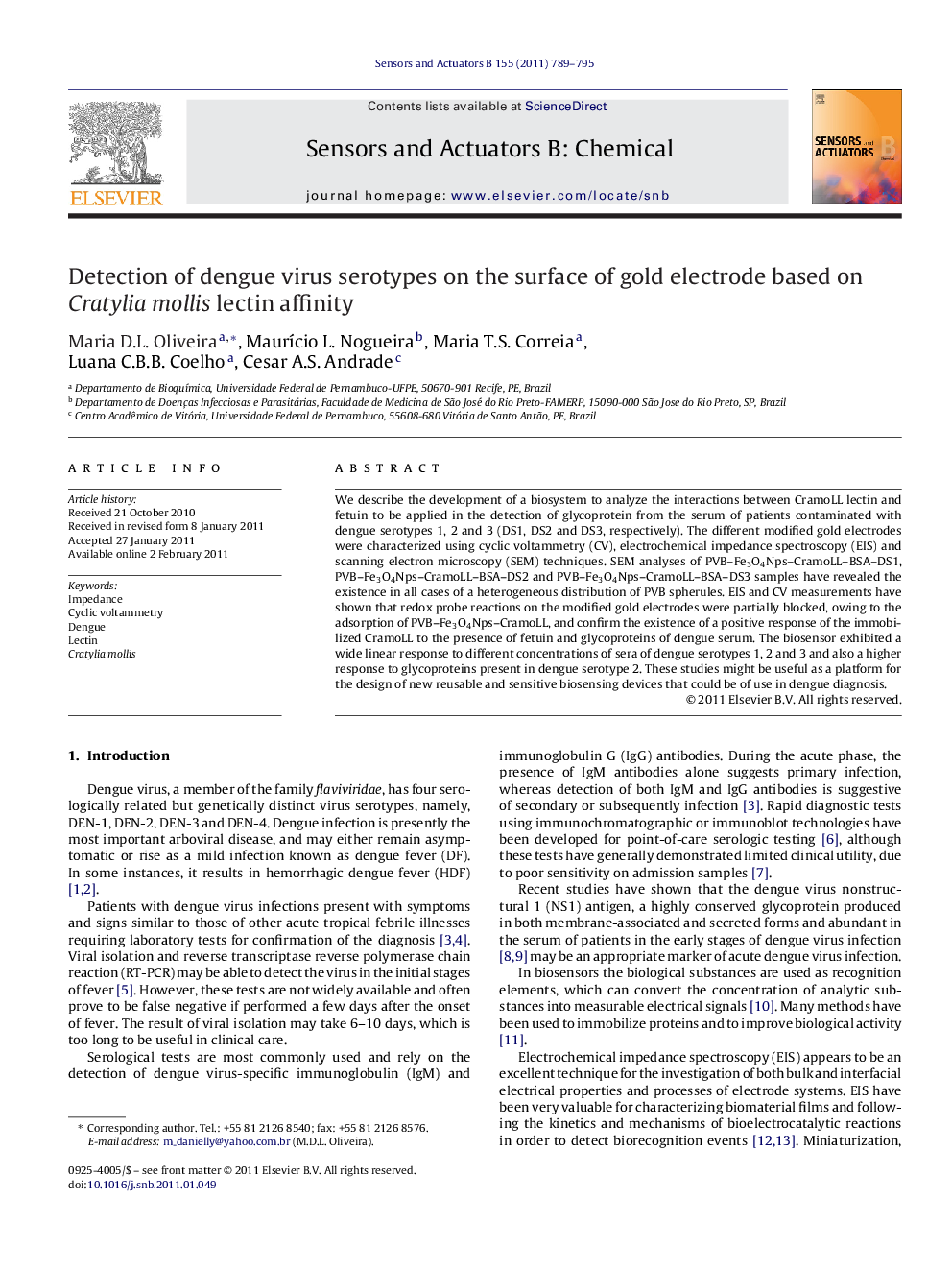| Article ID | Journal | Published Year | Pages | File Type |
|---|---|---|---|---|
| 744144 | Sensors and Actuators B: Chemical | 2011 | 7 Pages |
We describe the development of a biosystem to analyze the interactions between CramoLL lectin and fetuin to be applied in the detection of glycoprotein from the serum of patients contaminated with dengue serotypes 1, 2 and 3 (DS1, DS2 and DS3, respectively). The different modified gold electrodes were characterized using cyclic voltammetry (CV), electrochemical impedance spectroscopy (EIS) and scanning electron microscopy (SEM) techniques. SEM analyses of PVB–Fe3O4Nps–CramoLL–BSA–DS1, PVB–Fe3O4Nps–CramoLL–BSA–DS2 and PVB–Fe3O4Nps–CramoLL–BSA–DS3 samples have revealed the existence in all cases of a heterogeneous distribution of PVB spherules. EIS and CV measurements have shown that redox probe reactions on the modified gold electrodes were partially blocked, owing to the adsorption of PVB–Fe3O4Nps–CramoLL, and confirm the existence of a positive response of the immobilized CramoLL to the presence of fetuin and glycoproteins of dengue serum. The biosensor exhibited a wide linear response to different concentrations of sera of dengue serotypes 1, 2 and 3 and also a higher response to glycoproteins present in dengue serotype 2. These studies might be useful as a platform for the design of new reusable and sensitive biosensing devices that could be of use in dengue diagnosis.
